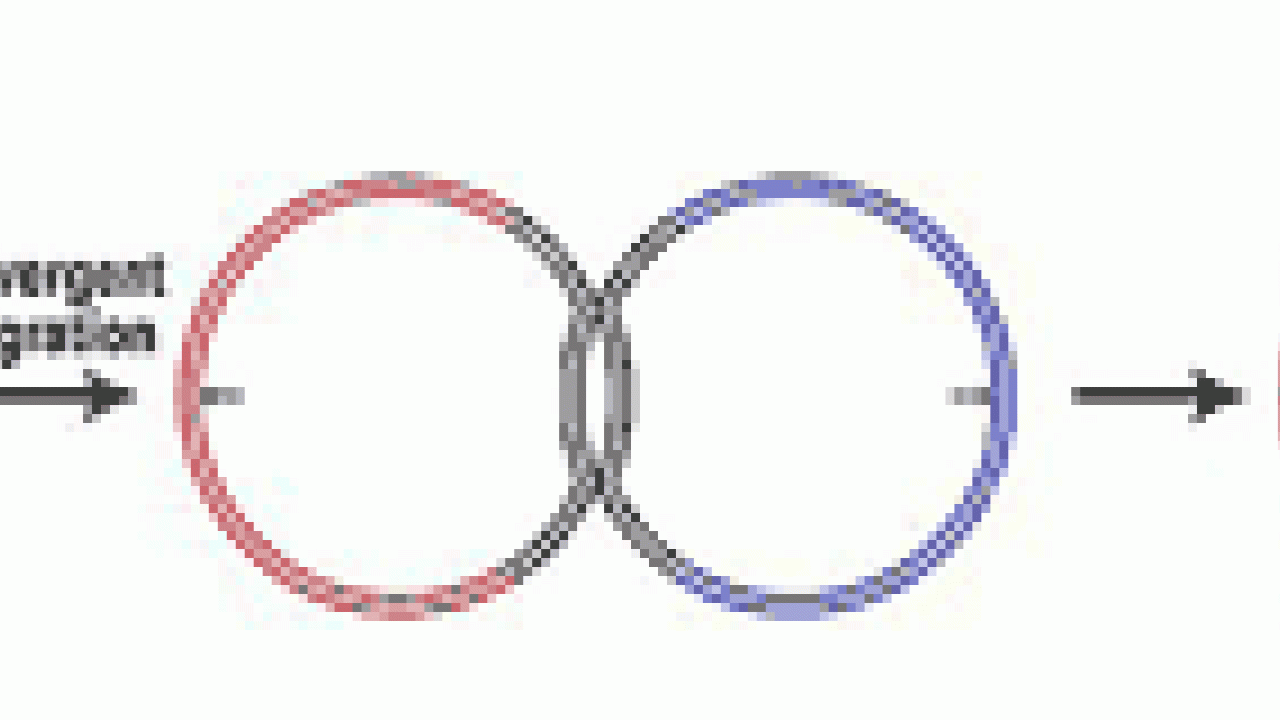A new study from UC Davis shows how, like a conjuring trick with interlocking rings, two interlocked pieces of DNA are separated after DNA is copied or repaired. The finding was published online Oct. 10 in the journal Nature Structural and Molecular Biology.
While reconstituting the DNA repair system of yeast in a test tube, the researchers found that a complex of proteins called Sgs1, Top3 and Rmi1 allow one DNA strand to open and the other to pass through.
"This protein complex does what magicians do," said lead researcher Stephen Kowalczykowski, distinguished professor of microbiology in the UC Davis College of Biological Sciences and a member of the of the UC Davis Cancer Center.
The discovery may hold answers to a human disease called Bloom's syndrome, which increases the risk of cancer, among other health problems. Sgs1 appears to be the yeast equivalent of the human protein tied to Bloom's syndrome, Kowalczykowski said.
DNA suffers damage all the time both from outside influences, such as radiation or chemicals, and also from normal cellular processes. Unrepaired, DNA damage can lead to cancer or birth defects. Several genes linked to a high risk of cancer, such as the "breast cancer gene" BRCA2, have turned out to be involved in DNA repair.
When damage crosses both strands of the DNA double helix, a sophisticated repair process is activated that uses the same DNA sequence on the matching chromosome. One of the strands is stripped back, leaving an exposed single strand. The matching chromosome is brought alongside and partly unwound, and acts as a template to repair the broken piece.
At this point, the two chromosomes are intact but attached at two points through structures called "Holliday junctions," where DNA strands from the two chromosomes cross each other. To finish the process, the chromosomes have to separate -- like the magician's interlocking rings, one has to pass through the other.
Working with a mix of yeast proteins and DNA in a test tube, Kowalczykowski and his colleagues showed that the Sgs1/Top3/Rmi1 protein complex attaches to the paired DNA at the Holliday junction, opens up a gap in one strand and passes the other through it, allowing the two chromosomes to separate cleanly and dissolving the junction.
Patients with Bloom's syndrome show extensive swapping of chunks of DNA between chromosomes. Kowalczykowski is convinced that the problem is due to poor dissolution of Holliday junctions in these patients.
Holliday junctions were only definitively shown to exist in mitotically dividing cells in April this year, in a paper by UC Davis researchers Malgosia Bzymek and Neil Hunter, associate professor of microbiology.
Kowalczykowski’s collaborators in the new study were UC Davis postdoctoral researchers Petr Cejka and Jody Plank, and Oxford University scientists Csanad Bachrati and Ian Hickson.
In a paper published in Nature last month, Kowalczykowski's lab also showed that the Sgs1/Top3/Rmi1 complex of proteins is involved in the first step of DNA repair -- cleaning the broken end to leave a single strand of DNA.
The research was funded by the National Institutes of Health, the Swiss National Science Foundation, and Cancer Research UK.
Media Resources
Andy Fell, Research news (emphasis: biological and physical sciences, and engineering), 530-752-4533, ahfell@ucdavis.edu
Stephen Kowalczykowski, Microbiology, 530-752-5938, sckowalczykowski@ucdavis.edu
